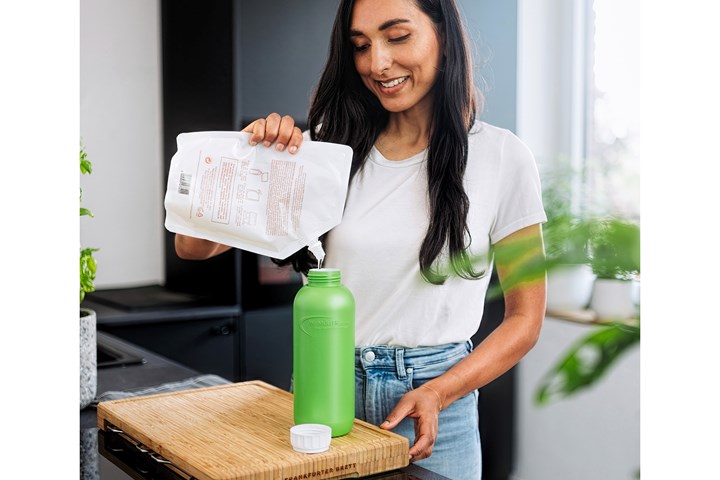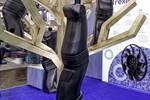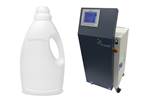Renewably Sourced, Foam-Core PP Bottle on Display at K 2022
Borealis Renewables PP bottle uses MuCell foaming technology in its core layer.

Borealis is displaying an extrusion blow molded PP bottle made from waste and recycled vegetable oils, which has a green solid exterior, white solid interior, and foamed middle layer produced with Trexel’s MuCell technology. (Photo: Borealis)
Borealis is showing next month at the K 2022 show in Düsseldorf a three-layer coextrusion blow molded bottle made from Bornewables PP derived solely from waste and residue streams such as byproducts of vegetable oil production and waste cooking oil. The bottle has a green solid outer layer and white solid inner layer. In between is a microcellular foam layer produced with MuCell technology from Trexel, which recently acquired rights to pursue extrusion blow molding applications in packaging and other markets beyond its original foothold in automotive (see September Starting Up). Foaming offers lightweighting and energy savings, Borealis notes, and the foamed bottles are fully recyclable.
Related Content
-
For Extrusion and Injection-Blow Molders, Numerous Upgrades in Machines and Services
Uniloy is revising its machinery lines across the board and strengthening after-sales services in tooling maintenance, spare parts and tech service.
-
Foam-Core Multilayer Blow Molding: How It’s Done
Learn here how to take advantage of new lightweighting and recycle utilization opportunities in consumer packaging, thanks to a collaboration of leaders in microcellular foaming and multilayer head design.
-
Get Color Changes Right In Extrusion Blow Molding
Follow these best practices to minimize loss of time, material and labor during color changes in molding containers from bottles to jerrycans. The authors explore what this means for each step of the process, from raw-material infeed to handling and reprocessing tails and trim.













